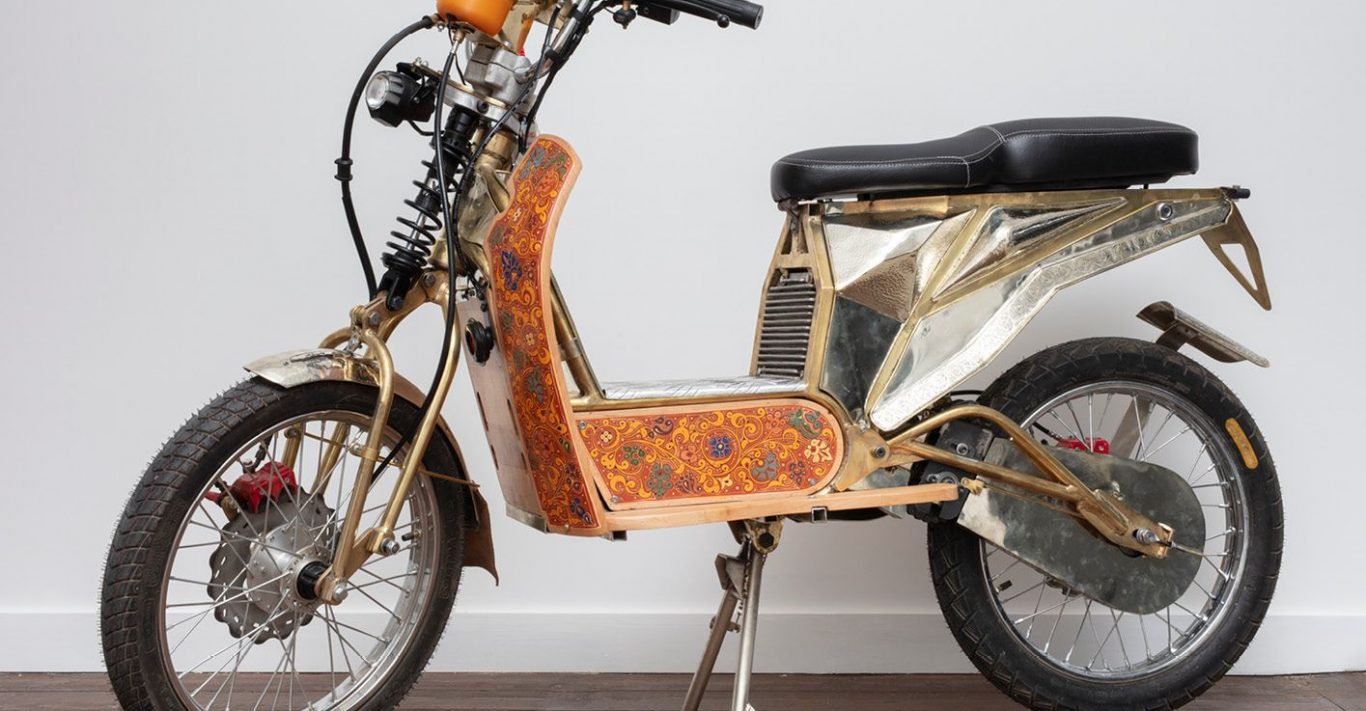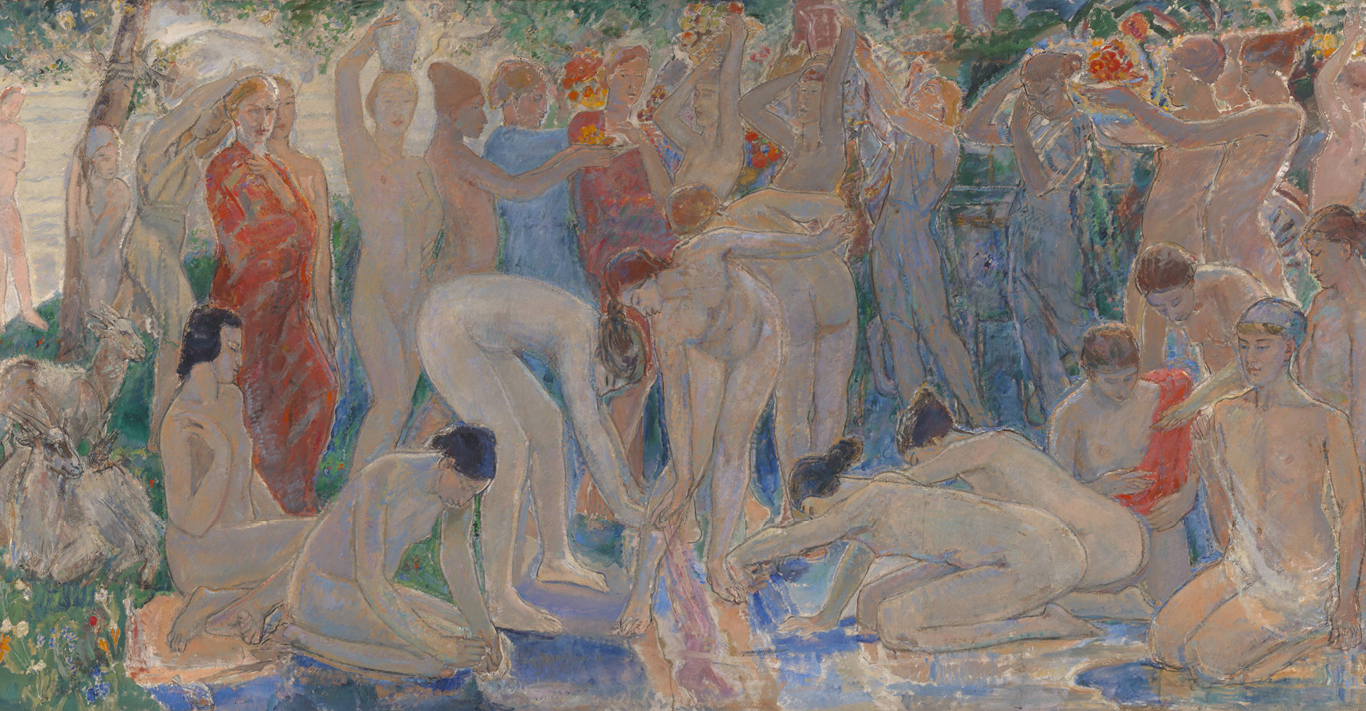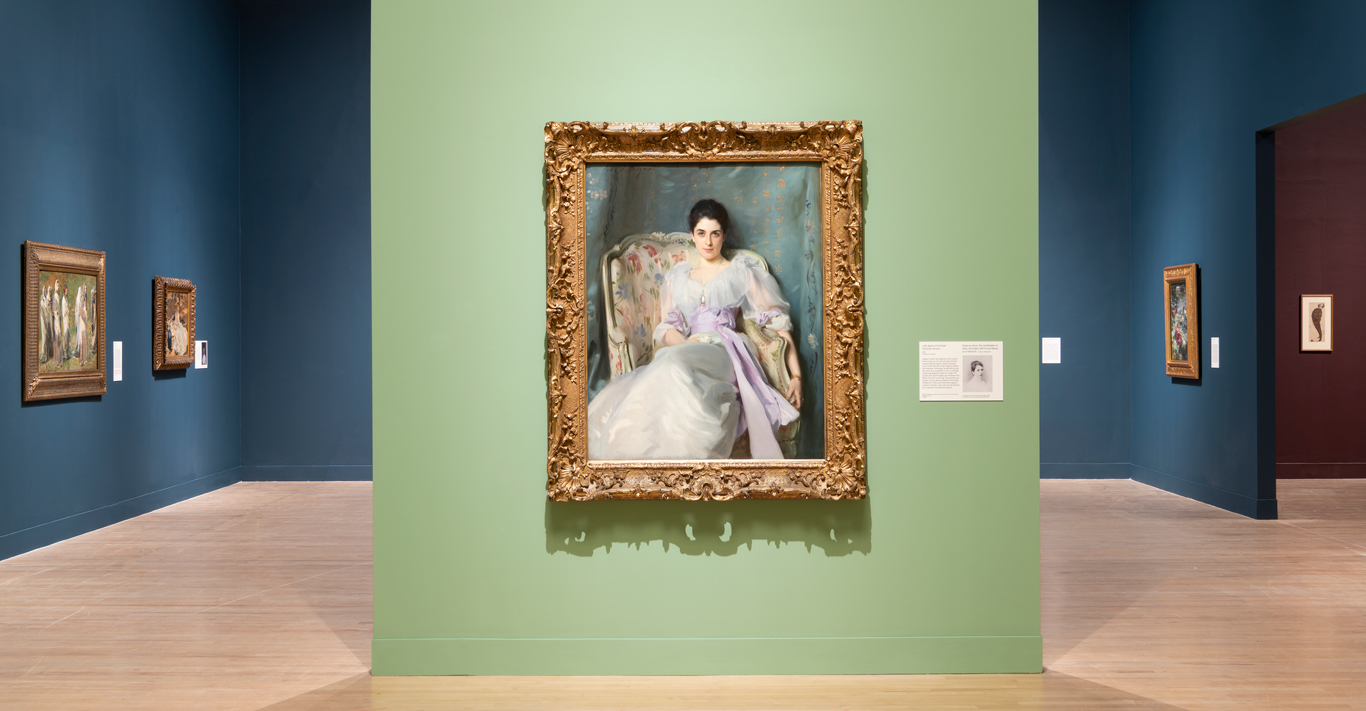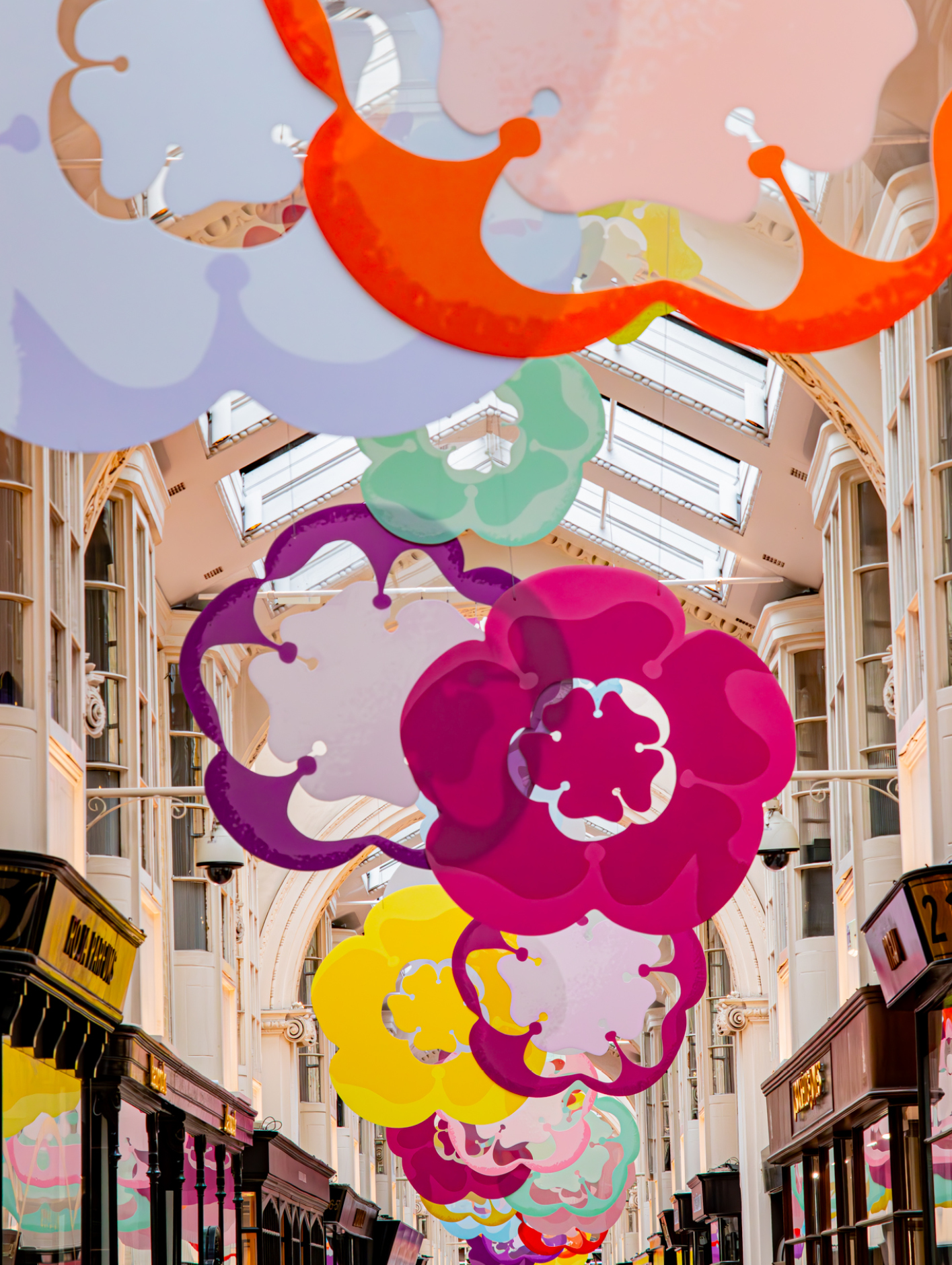PHOTOGRAPHY
Keetja Allard, Will Amlot, Frank Ellenberger
WORDS
Scarlet Bailey-Tait
Titled Fenduq, the exhibition at Connolly displays a selection of Van Hove’s sculptures from the last decade, ranging from hand-made replicas of car engine parts to the centre piece, Mahjouba IV, an electric moped built by Moroccan craftsmen for the local Moroccan market. This exhibition confronts important global issues: the disappearance of craft in an age of mass consumption, sustainability and local labour ethics.
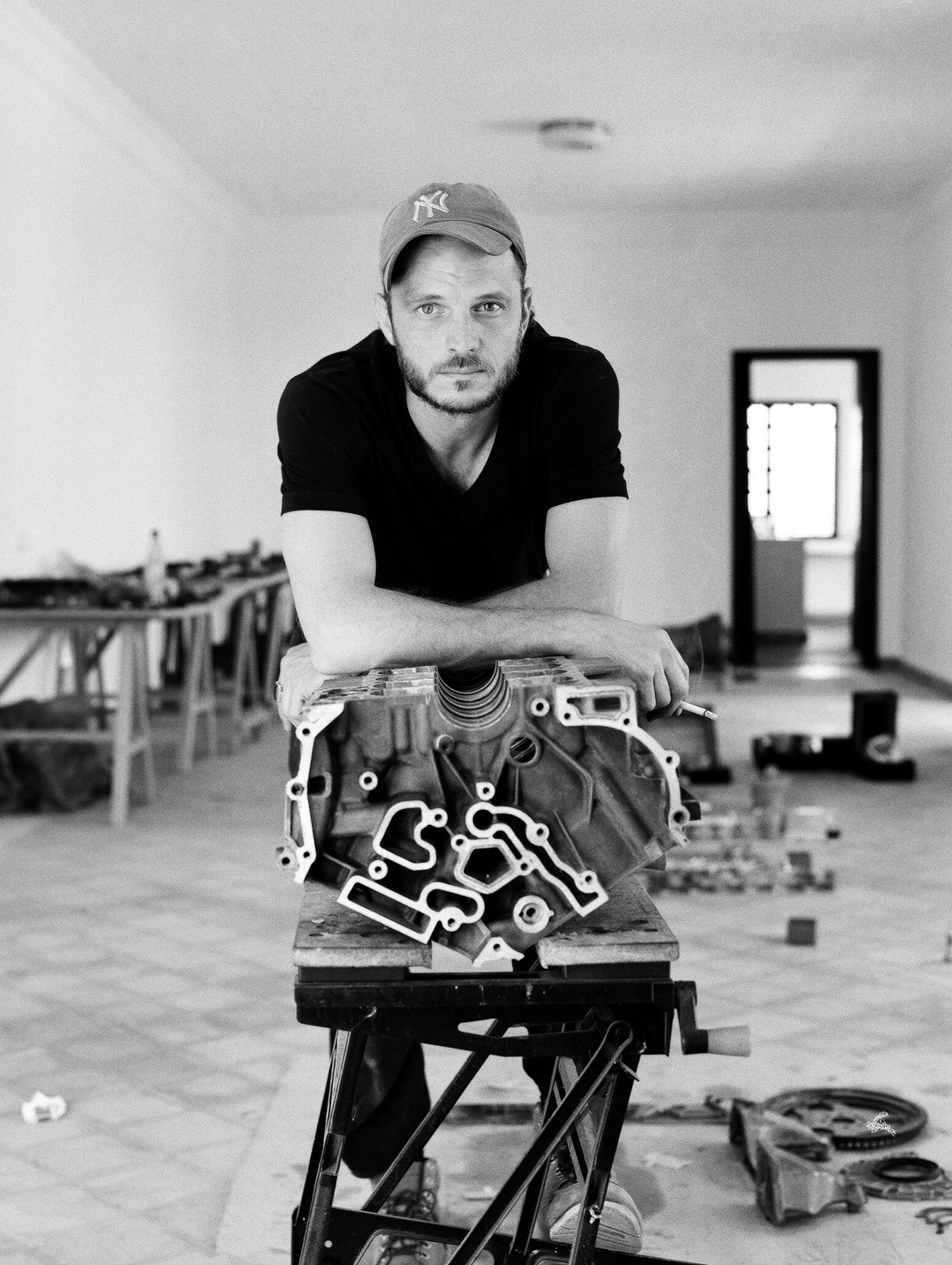
Van Hove, born in 1975 in Algeria, is a Belgian artist who lives and works in Marrakech. His practice brings together engineering, design, craft and art, with a focus on the importance of maintaining the legacy of craft in the face of mass production and consumption. He said, ‘I try not to be a commodity, I try to break free from that.’ His pieces challenge the Eurocentric concept of art as the product of a single vision as he works alongside a team of Moroccan craftsmen in his workspace, named the Fenduq. The name “Fenduq” is a combination of Arabic words, “fenn” meaning art, and “funduq” meaning workshop.
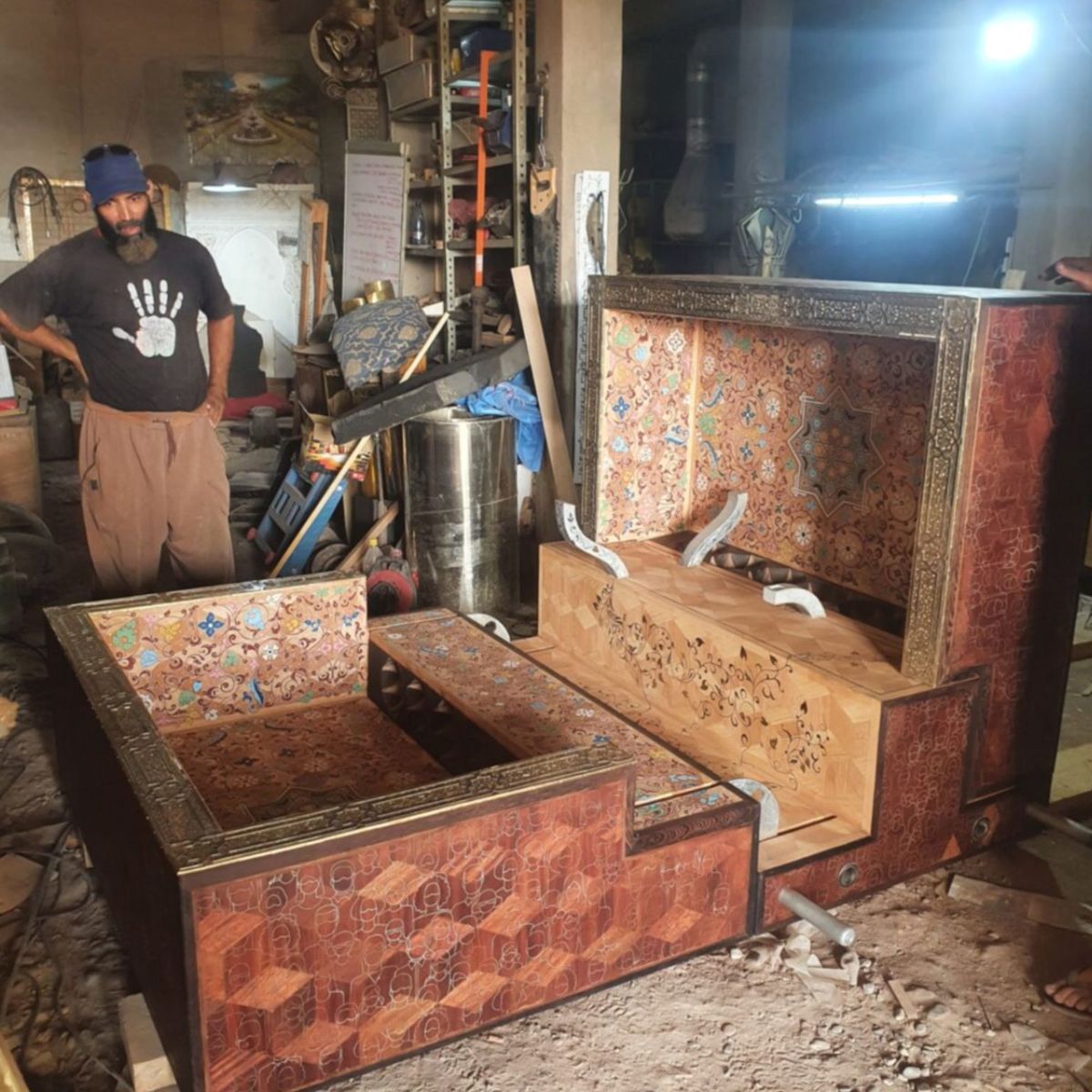
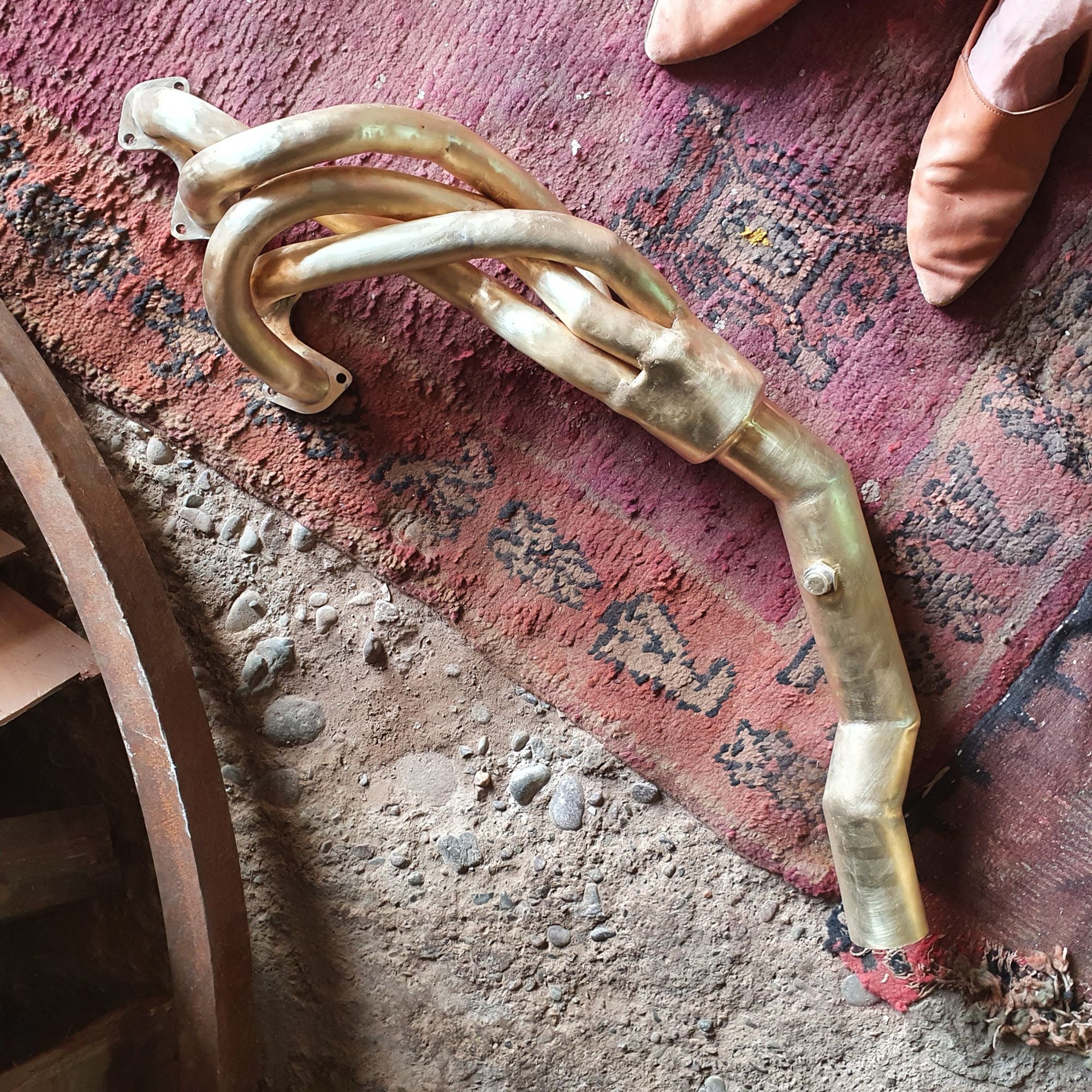
He founded his workshop in Marrakech back in 2012, in response to something which had a profound effect on him. A decade earlier, Moroccan engineer Abdeslam Laraki created a car that was said to be all Moroccan-made, which it was, apart from its German V-12 Mercedes Benz engine. Van Hove was troubled by how in a country where almost 20% of the workforce are makers, why the engine could not have been made by Moroccans. As a result of this he embarked on a new venture in his artistic career, where he is focusing on creating a moped where all parts are Moroccan-made in a cooperative workshop.
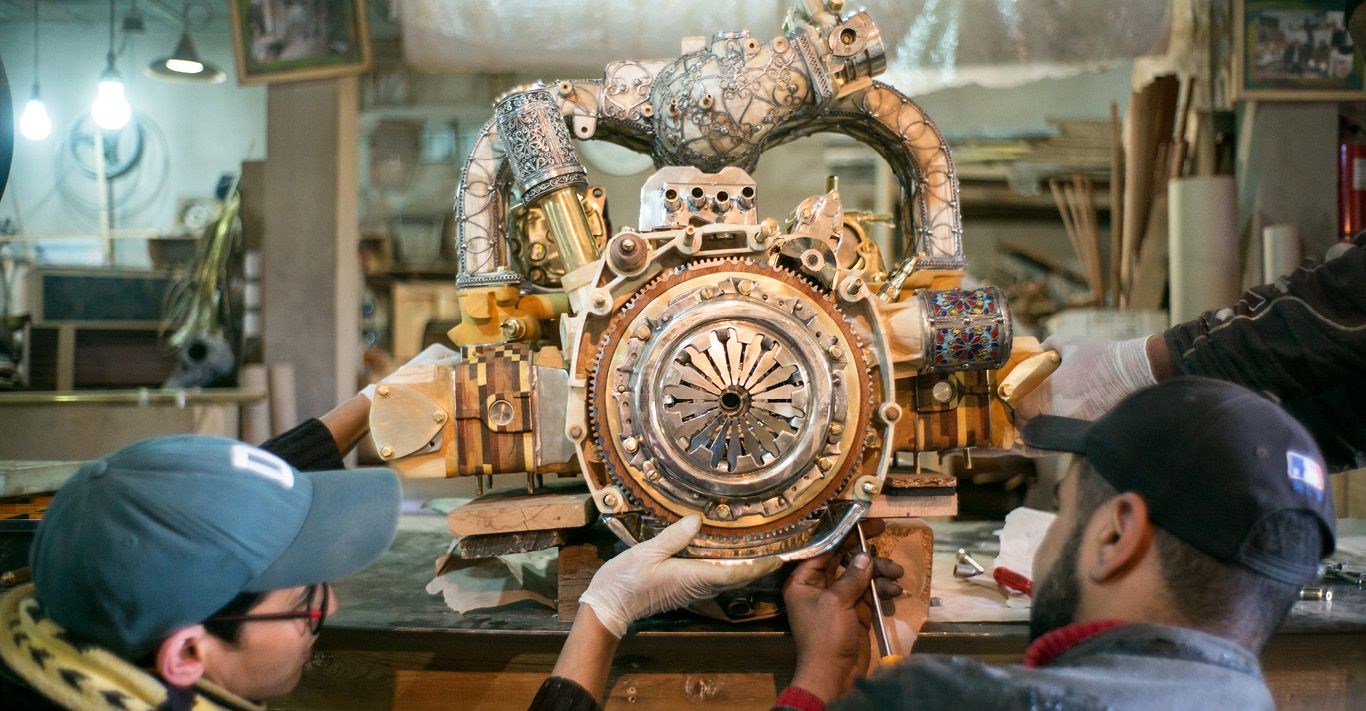
Since establishing the Fenduq, the artist has created a collective enterprise with 50 people working on and off at the workshop, each having the freedom to develop their speciality craft through the reproduction of car engine parts. Each sculpture is handmade from craft techniques that have been passed down through generations. Van Hove said, ‘I’m interested in living art. The real engine is not the art but it’s the studio and the people participating in it. I consider the studio to be a socioeconomic sculpture and the engine behind the engine is the team.’
Natasha Hoare, curator at Goldsmiths Centre for Contemporary Art, London, who has written about and studied the Fenduq, refers to it as, ‘A sculptural NGO with all the artistry and language of the White Cube, and all the dirt, dust and inspiration of the Medina workshop.’
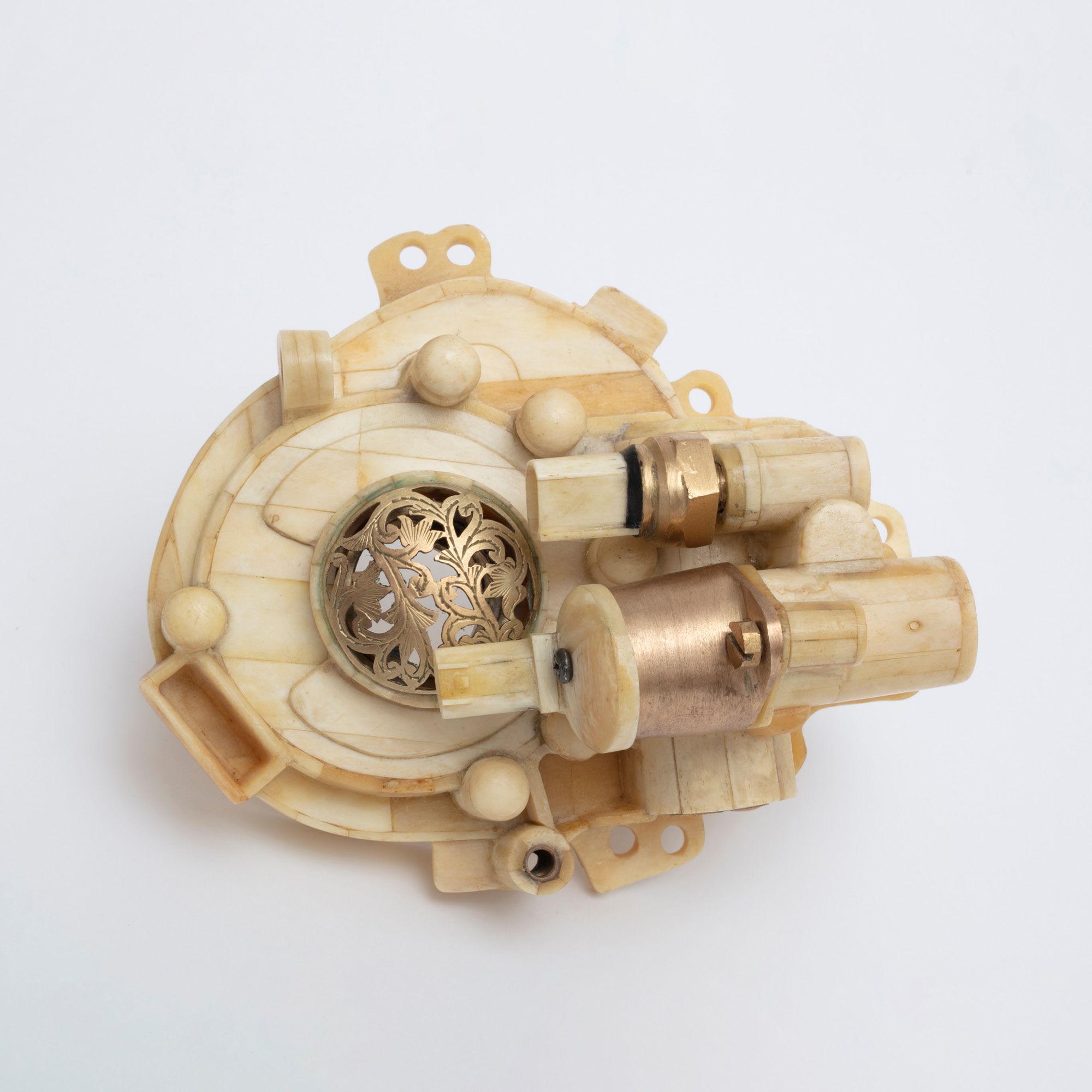
Taking pride of place in Connolly’s shop front window and on public view for the first time is Mahjouba IV, the fourth prototype for an electric moped which Van Hove and his team have been working on for seven years now. The artist hopes to connect local craftsmen to the electric engine revolution. The Mahjouba initiative centres around sustainability: calling for an end to constant import and export through making parts from natural materials mostly found in scrap yards like wood, used metals and bones. Aside from its function, the Mahjouba IV also encapsulates a sense of true Moroccan creativity with the elegant free-hand floral patterns on the wood and metal panels of the moped.
With Connolly not only being a shop, but a house and a workshop, the location for the exhibition seems perfect for Van Hove’s sculptures, as they fit seamlessly in a living room space on the second floor.
Van Hove’s work is in the permanent collections of The Museum of Modern Art, New York; Victoria and Albert Museum, London; Luma Foundation Collection, Zurich; Hood Museum of Art, New Hampshire, USA; Fries Museum, Leeuwarden, Holland and more. He currently has an exhibition and workshop at Museum Boijmans Van Beuningen, Rotterdam (January-May) and an upcoming show at the Jan Van Eyck Academie, Maastricht.
A percentage of the proceeds of each work’s sale will go to MAMMA, a charity selected by Van Hove that preserves Morocco’s Modernist and post-independence architectural heritage.
The Fenduq exhibition runs until 19 April at Connolly, 4 Clifford Street, London W1S 2LG; connollyengland.com/collections/eric-van-hove


